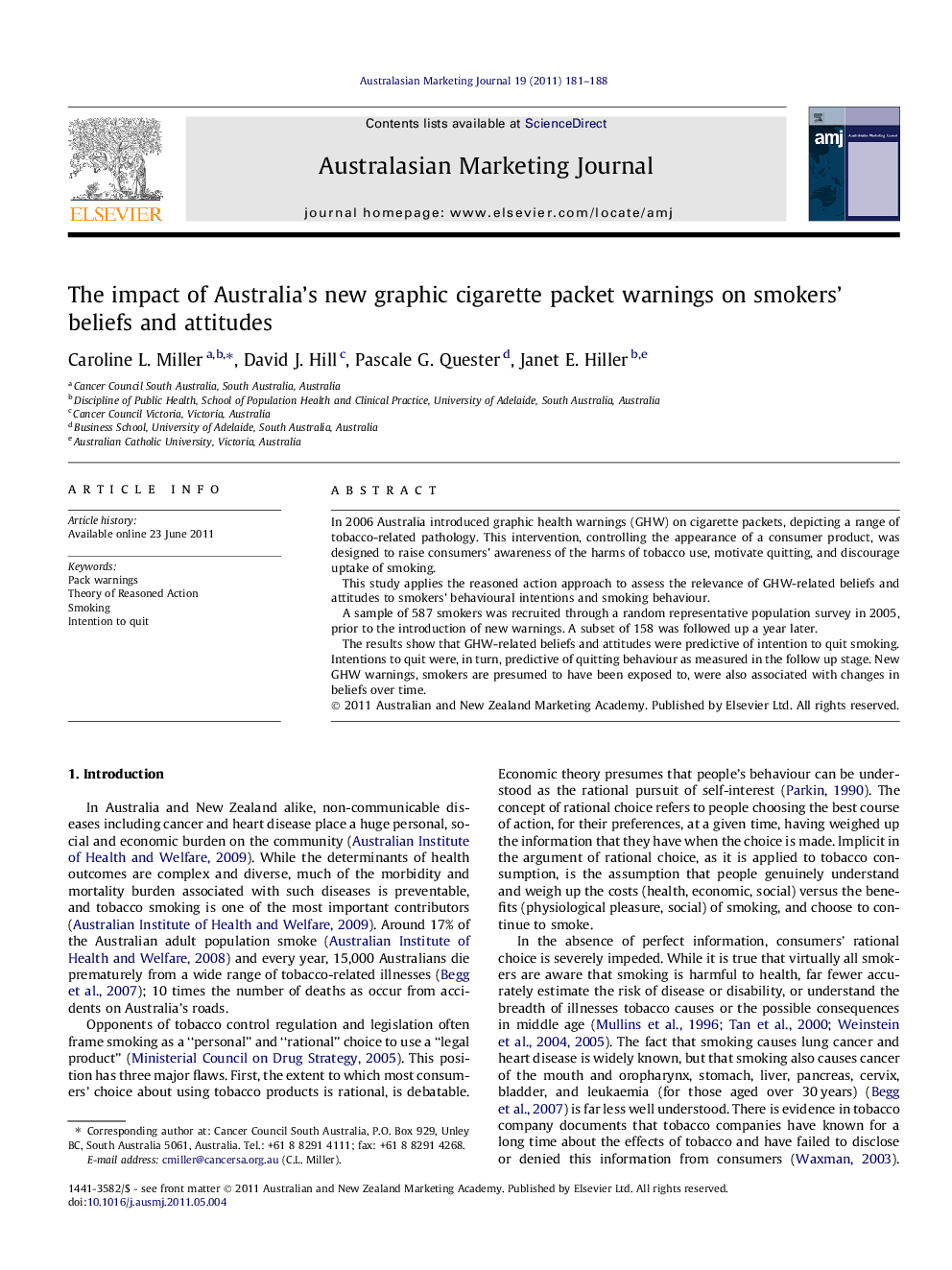| کد مقاله | کد نشریه | سال انتشار | مقاله انگلیسی | نسخه تمام متن |
|---|---|---|---|---|
| 1027164 | 942194 | 2011 | 8 صفحه PDF | دانلود رایگان |

In 2006 Australia introduced graphic health warnings (GHW) on cigarette packets, depicting a range of tobacco-related pathology. This intervention, controlling the appearance of a consumer product, was designed to raise consumers’ awareness of the harms of tobacco use, motivate quitting, and discourage uptake of smoking.This study applies the reasoned action approach to assess the relevance of GHW-related beliefs and attitudes to smokers’ behavioural intentions and smoking behaviour.A sample of 587 smokers was recruited through a random representative population survey in 2005, prior to the introduction of new warnings. A subset of 158 was followed up a year later.The results show that GHW-related beliefs and attitudes were predictive of intention to quit smoking. Intentions to quit were, in turn, predictive of quitting behaviour as measured in the follow up stage. New GHW warnings, smokers are presumed to have been exposed to, were also associated with changes in beliefs over time.
► Graphic health warnings (GHW) on cigarette packets aim to raise awareness and motivate quitting.
► We applied a reasoned action theoretical approach to understand the working of GHWs.
► We measured the effectiveness of GHWs with a cohort of Australian smokers.
► Australian GHWs changed smokers’ evaluations of the severity of getting smoking-related illness.
► GHW have clear implications for quitting attitudes, intentions and behaviour.
Journal: Australasian Marketing Journal (AMJ) - Volume 19, Issue 3, August 2011, Pages 181–188